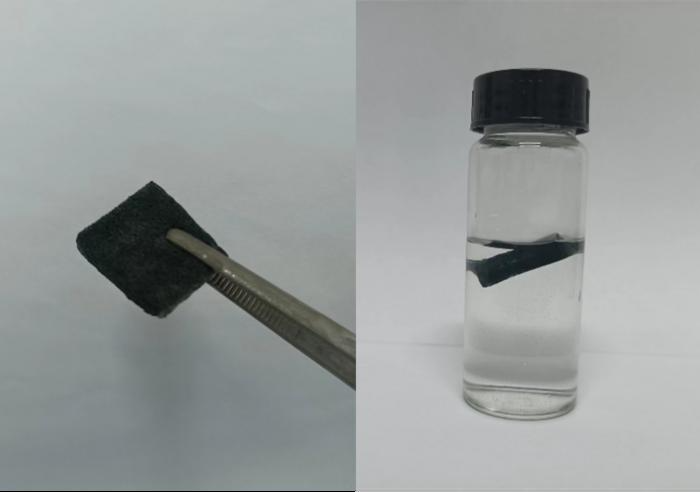Reviewed by Danielle Ellis, B.Sc.Aug 2 2023
Beachgoers do not want harmful algal blooms (HABs) to interfere with their plans during the hottest days of the summer. However, existing techniques to eliminate or eradicate cyanobacteria and algae that produce toxins are ineffective or impractical for use in waterways. Now, researchers have covered a floating sponge in a charcoal-like powder that, when combined with an oxidizing agent, killed over 85% of the algal cells in lake and river water samples, according to a study published in ACS ES&T Water.
 Pairing this floating sponge with an oxidizing agent could help destroy harmful algal blooms. Image Credit: Adapted from ACS ES&T Water 2023, DOI: 10.1021/acsestwater.3c00202
Pairing this floating sponge with an oxidizing agent could help destroy harmful algal blooms. Image Credit: Adapted from ACS ES&T Water 2023, DOI: 10.1021/acsestwater.3c00202
HABs, which are cyanobacteria with less vivid colors like Microcystis aeruginosa or electric green and bright orange-red, can create toxins that can make people and animals unwell. The destruction and damage of M. aeruginosa cells by acids and intense oxidizing agents has been demonstrated by researchers, but they also produce undesirable, possibly hazardous byproducts.
More recently, Jiangfang Yu, Lin Tang, and colleagues proposed that persulfate-based oxidants could be used to reduce the algal blooms of this species. However, these substances need catalysts, like powdered biochar, a material similar to charcoal derived from carbon-containing trash, to function.
The team’s goal was to create a floating biochar-containing substance that would accelerate the death of dangerous algal cells without causing environmental harm from byproducts.
The scientists created a powdered biochar from shrimp shells after beginning with a porous melamine sponge. At 572 degrees Fahrenheit, they joined the sponge and biochar together by sandwiching a thin layer of polyvinyl alcohol between them.
Within five hours, the floating sponge and a persulfate-based oxidizing agent had destroyed the membranes of roughly 90% of the M. aeruginosa cells in test dishes. The cells’ interior contents were freed once the membranes ruptured, and they quickly disintegrated into smaller parts.
The researchers also used the catalyst sponge and persulfate system to inactivate more than 85% of the algal cells in actual lake and water samples. According to the findings, the research hypothesizes that the novel approach would work well for algal cleanup in bloom-affected settings.
Source:
Journal reference:
Deng, F., et al. (2023). Floatable 3D Sponge@SBC-Induced Dual-Pathway-Activated Persulfate for Microcystis aeruginosa Inactivation. ACS ES&T Water. doi.org/10.1021/acsestwater.3c00202